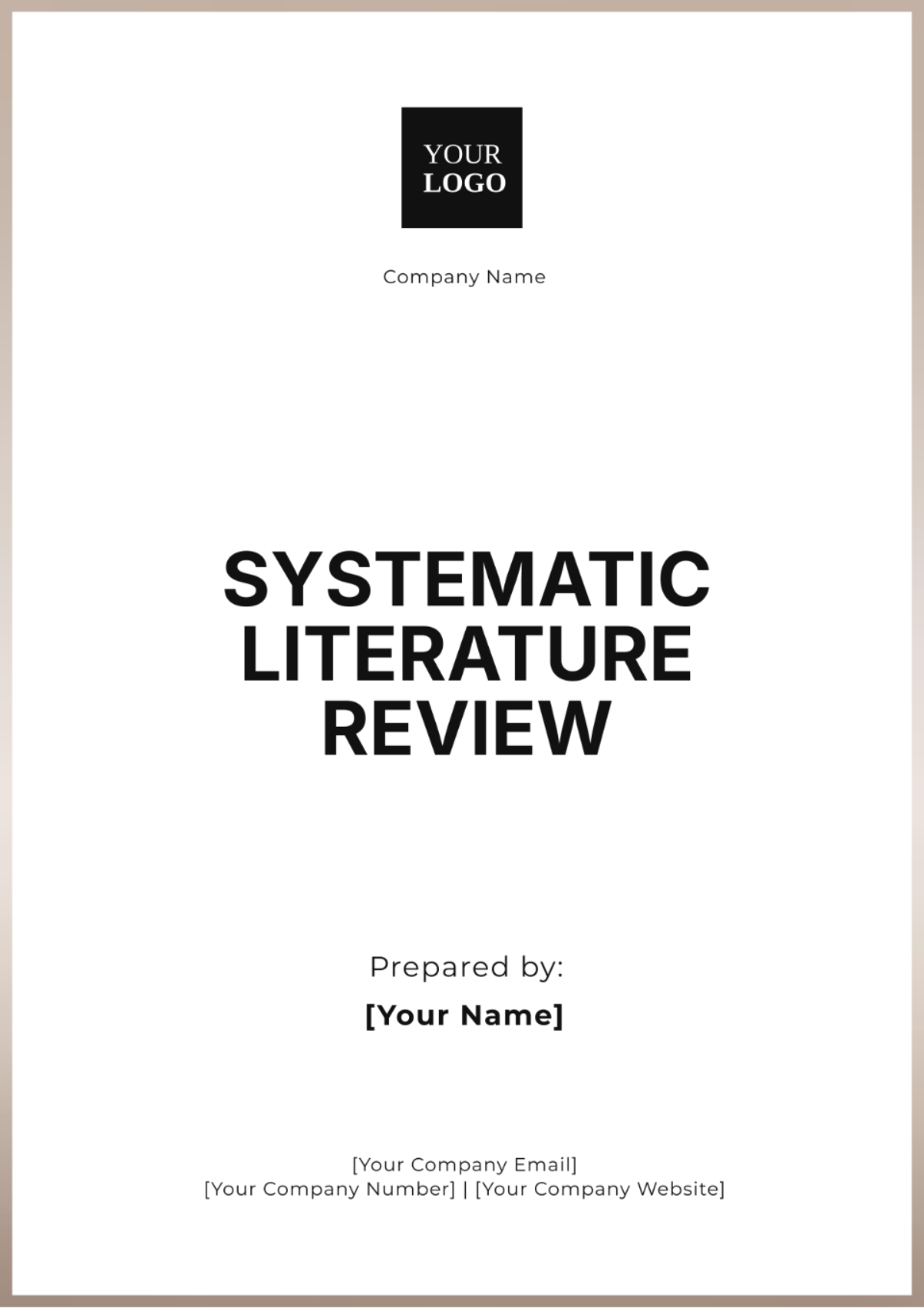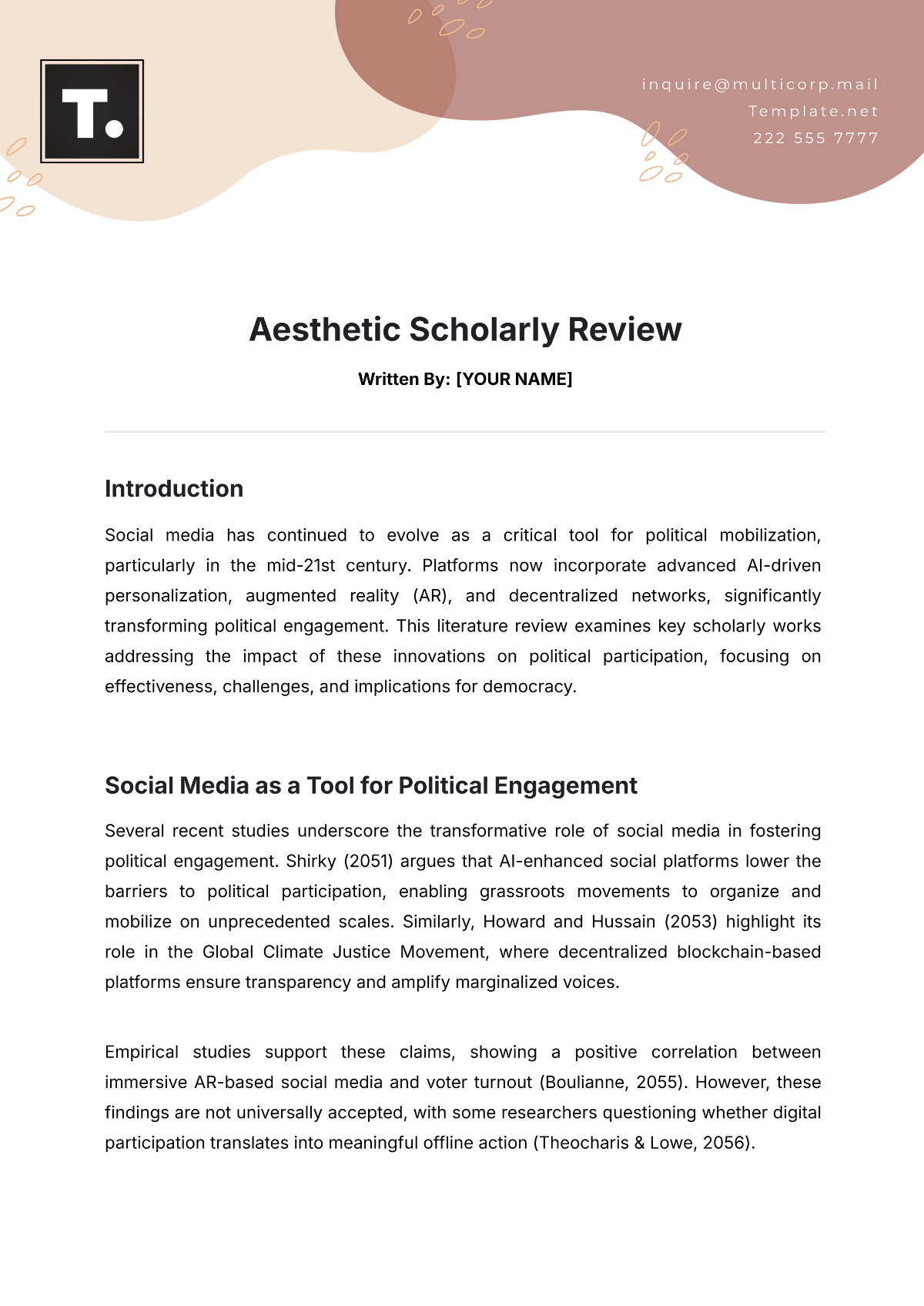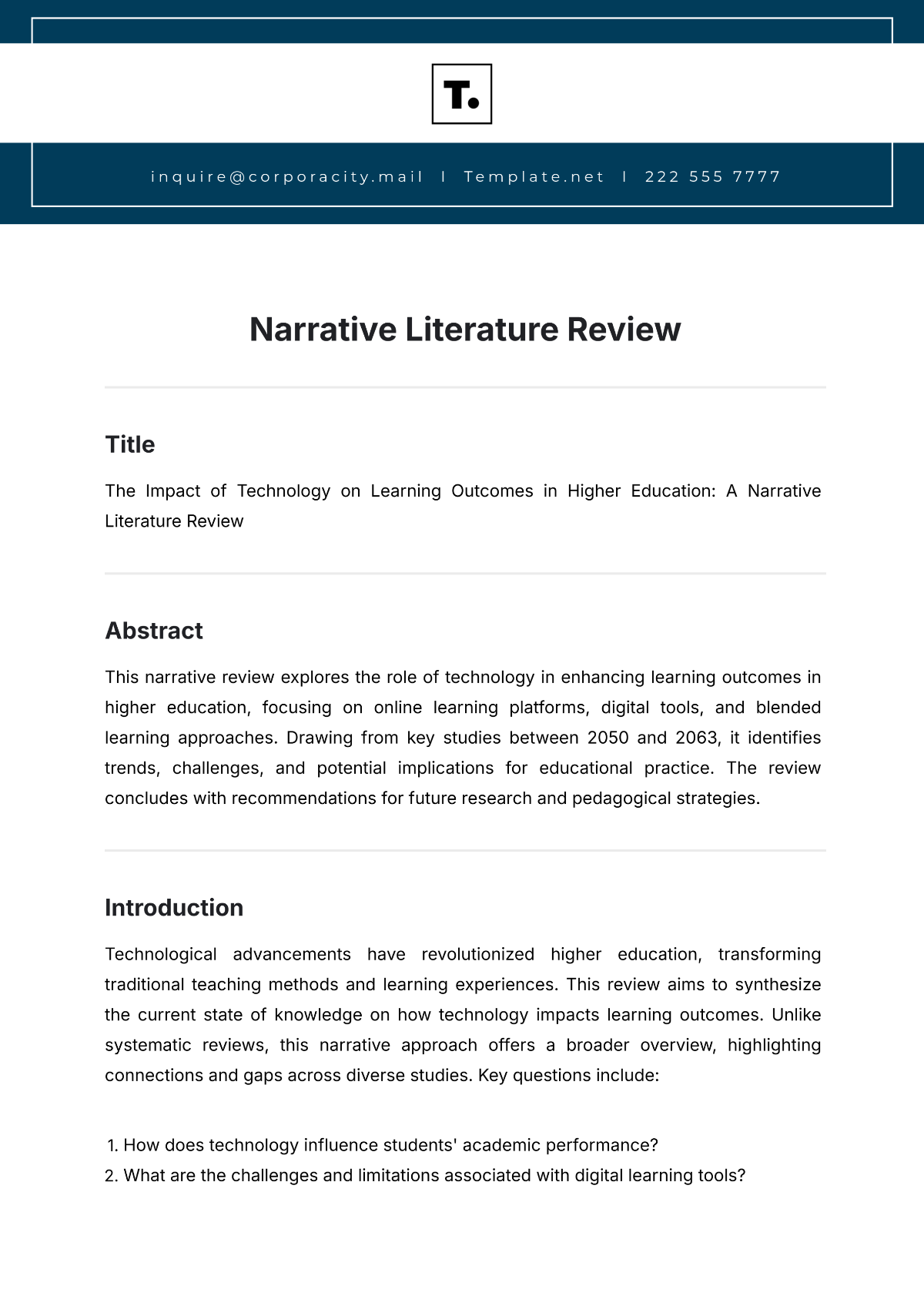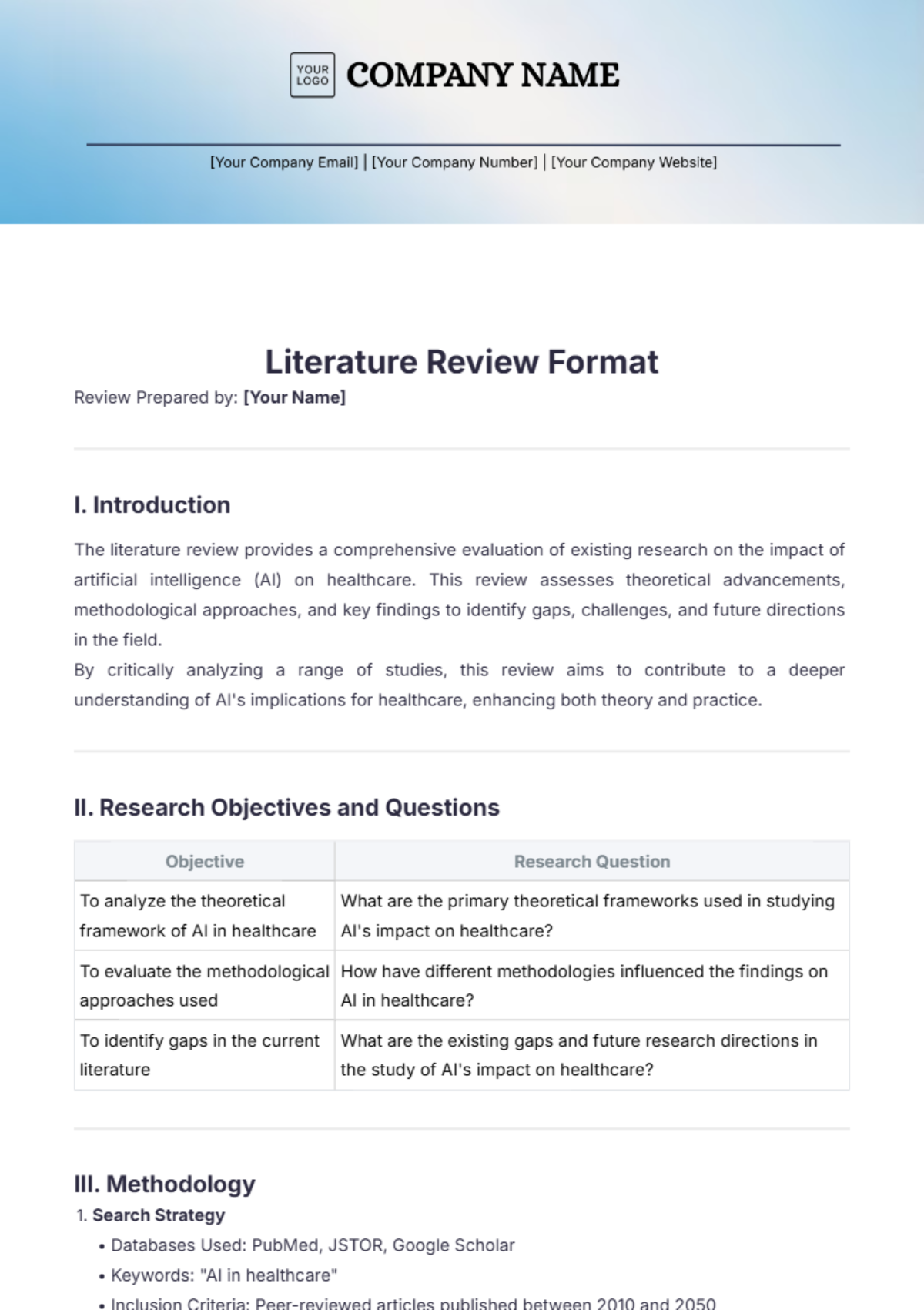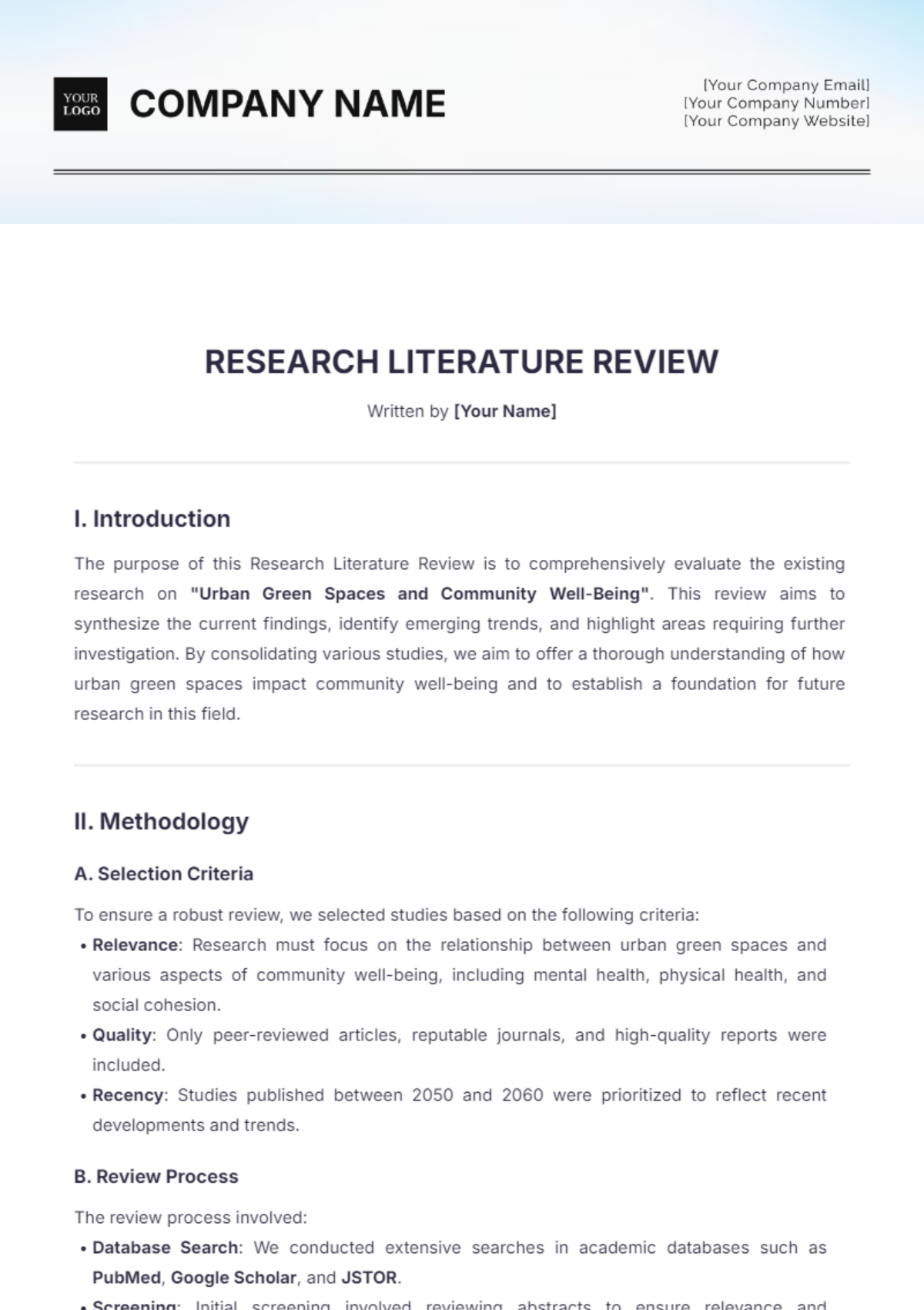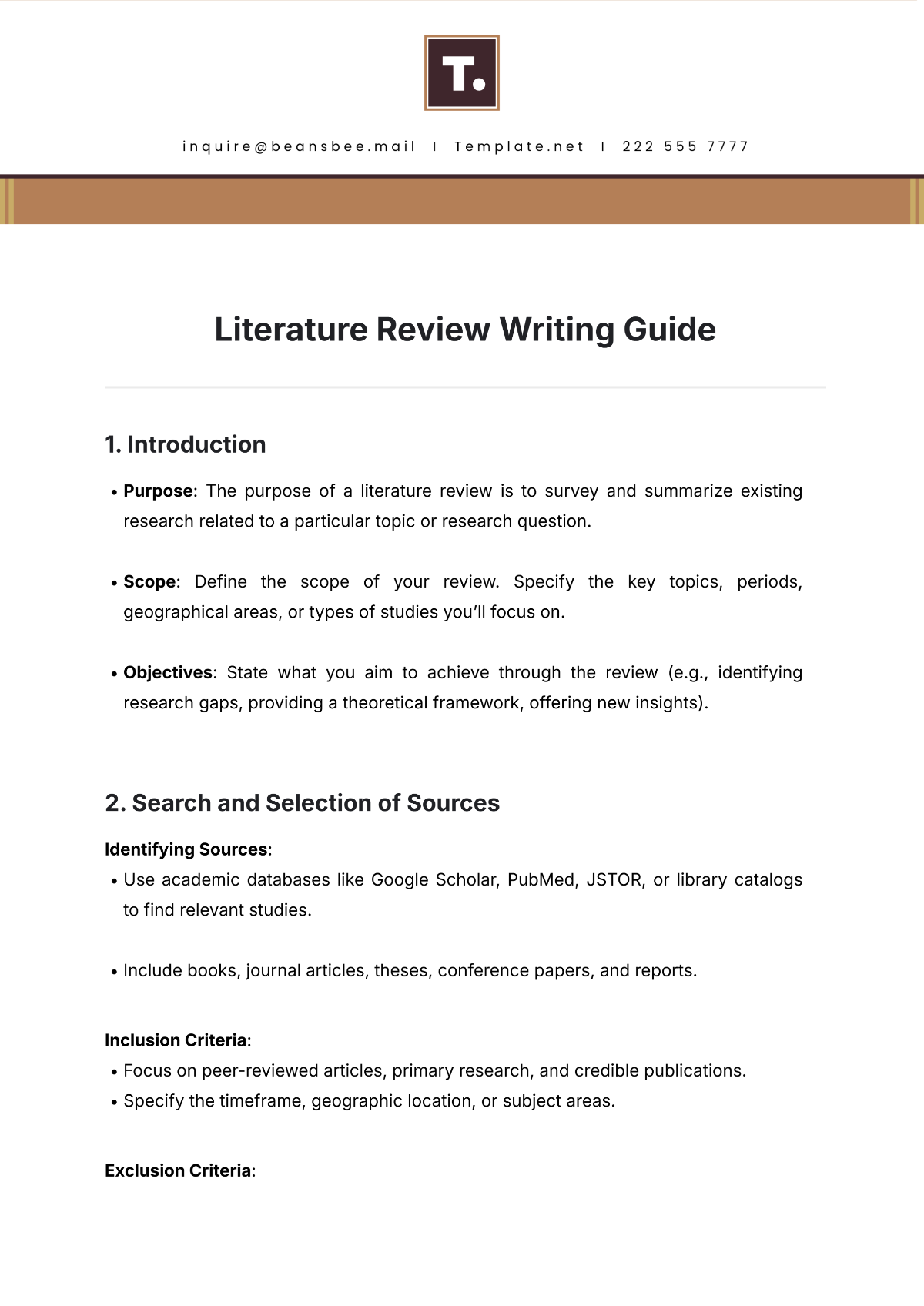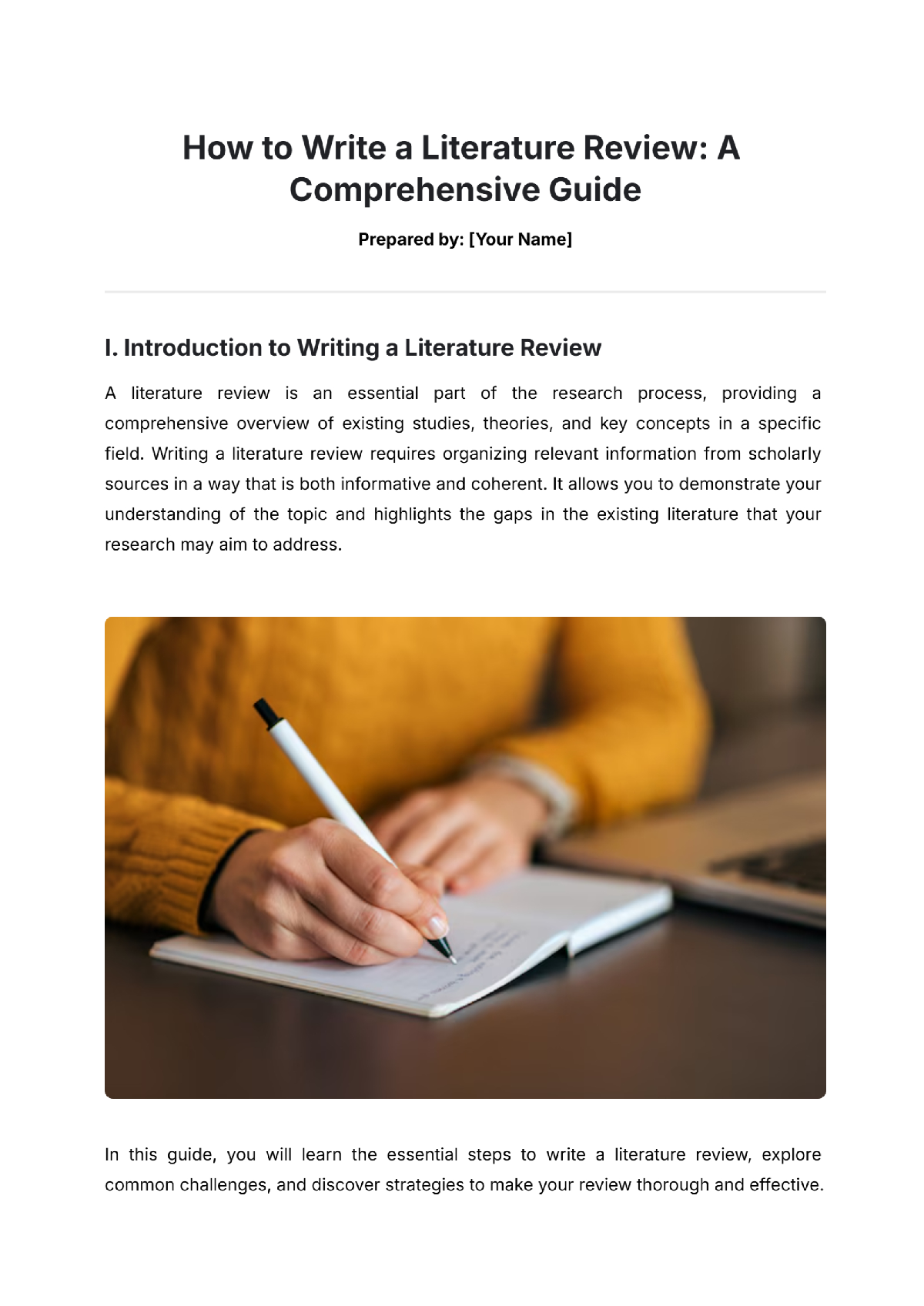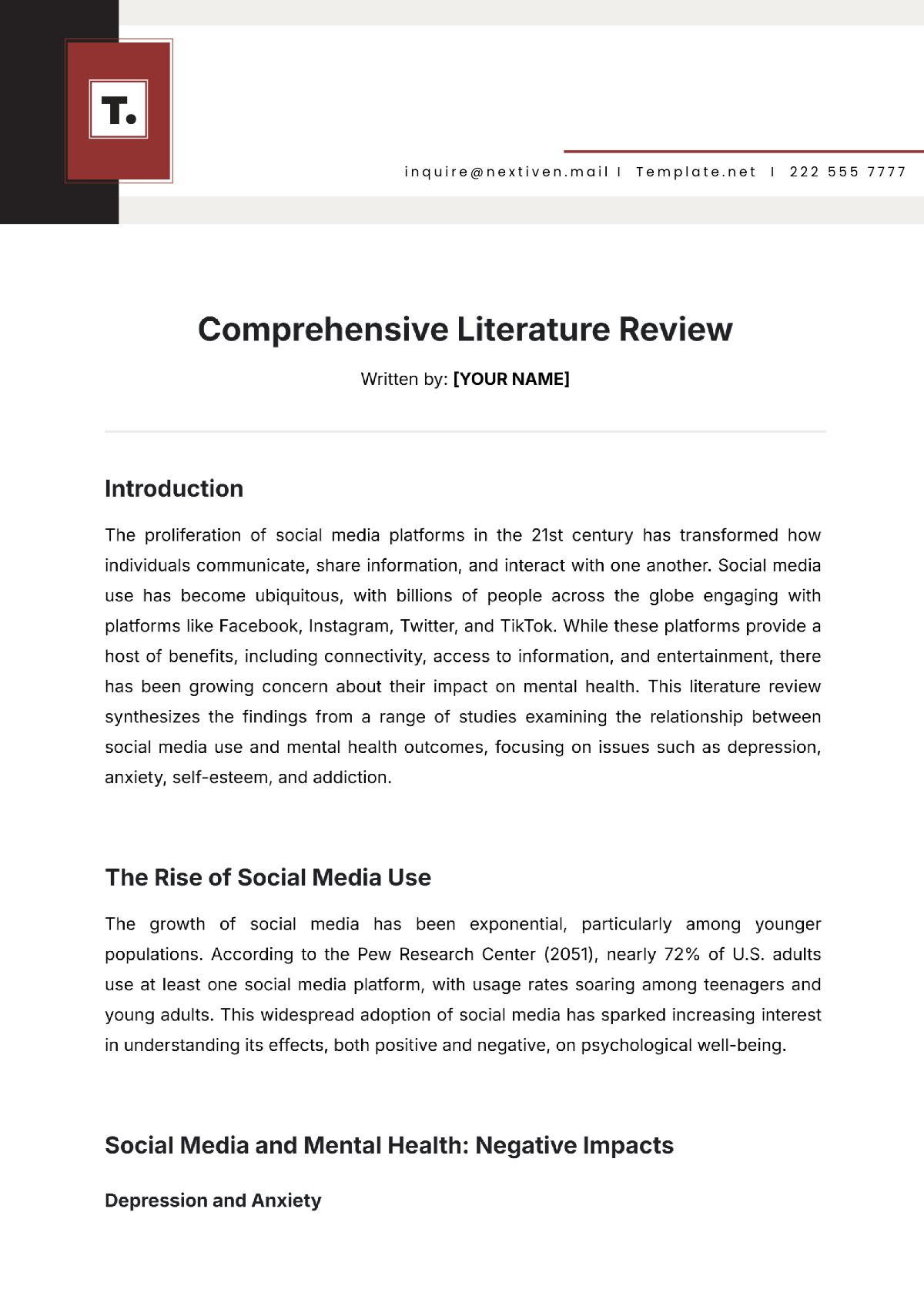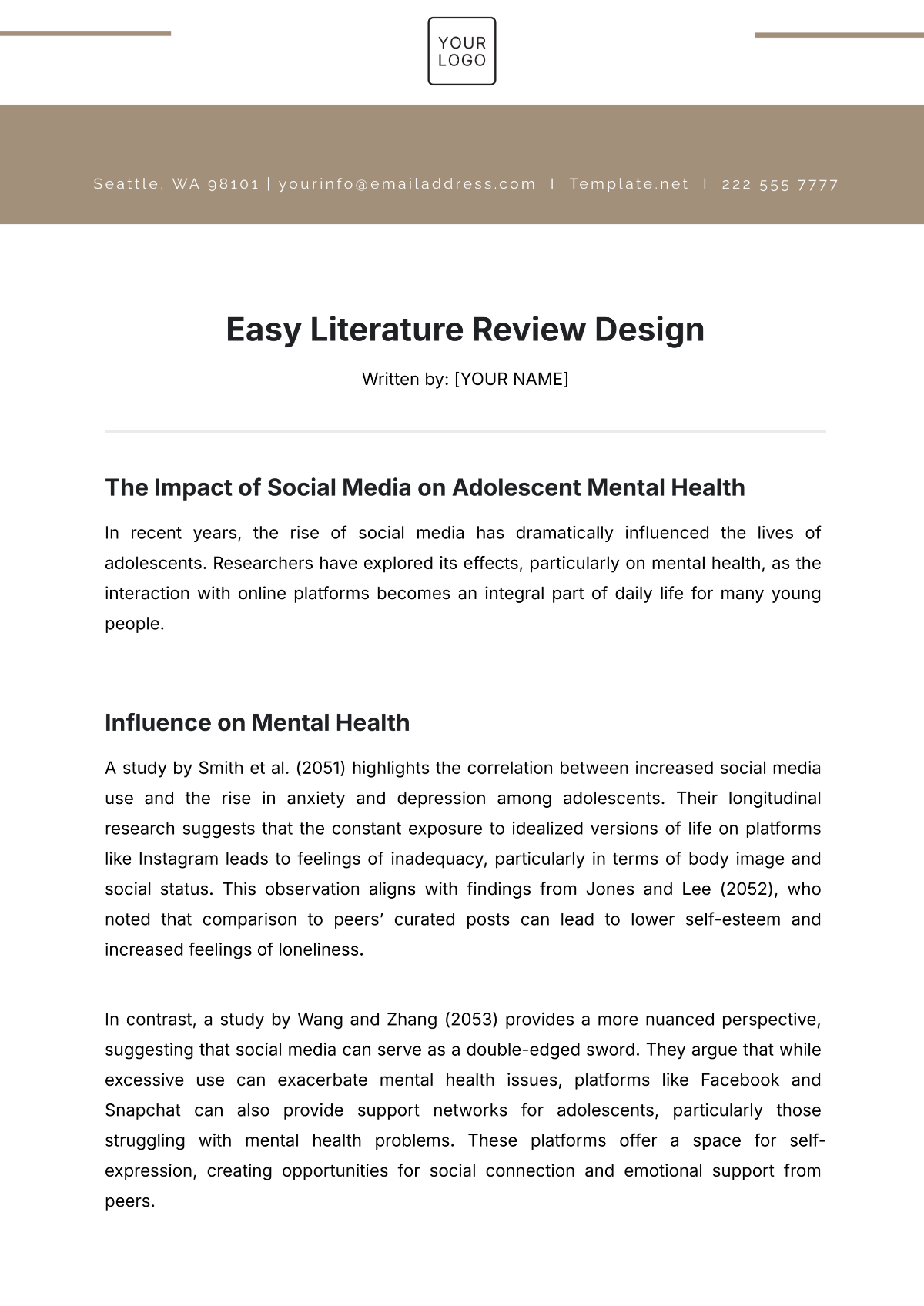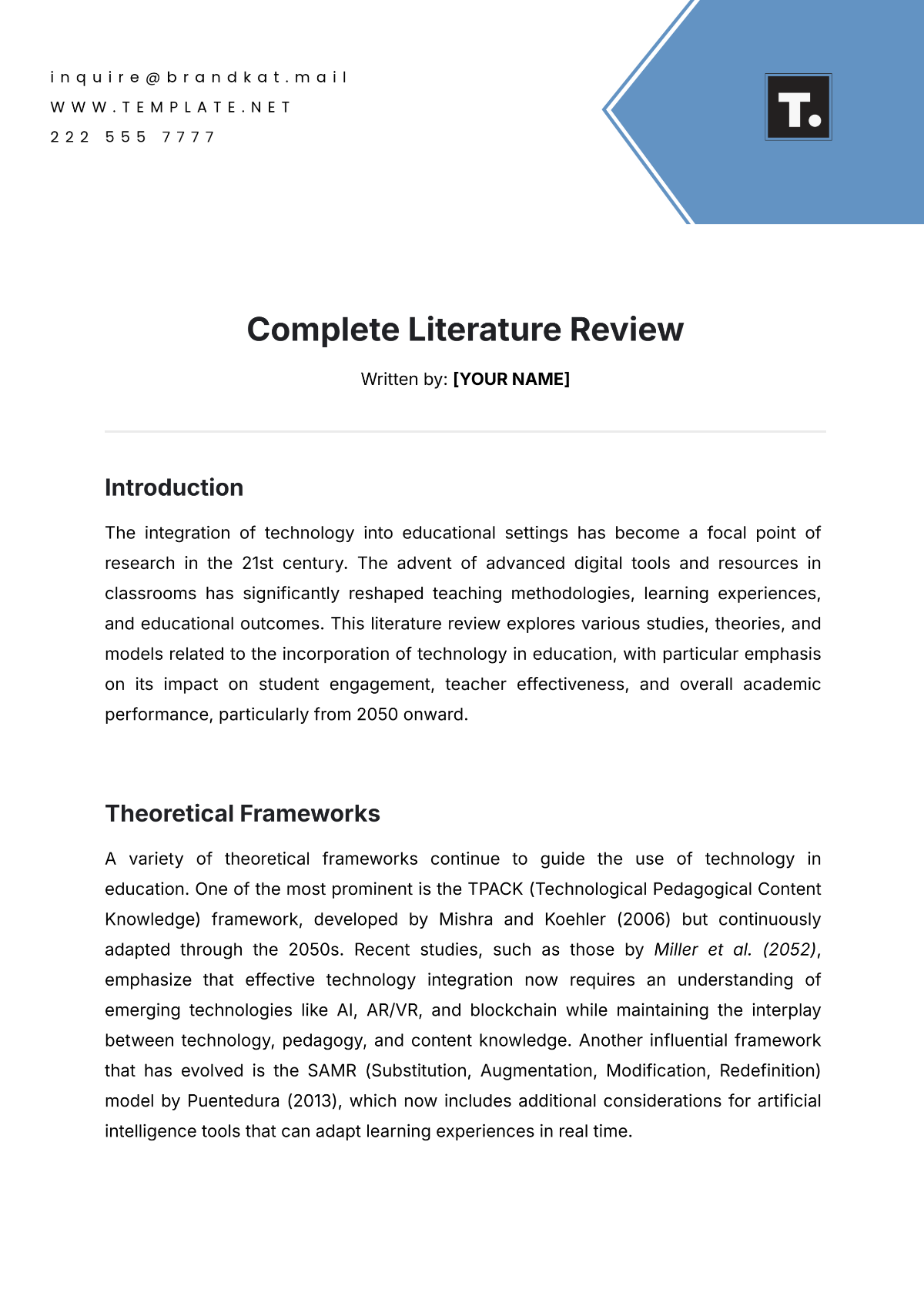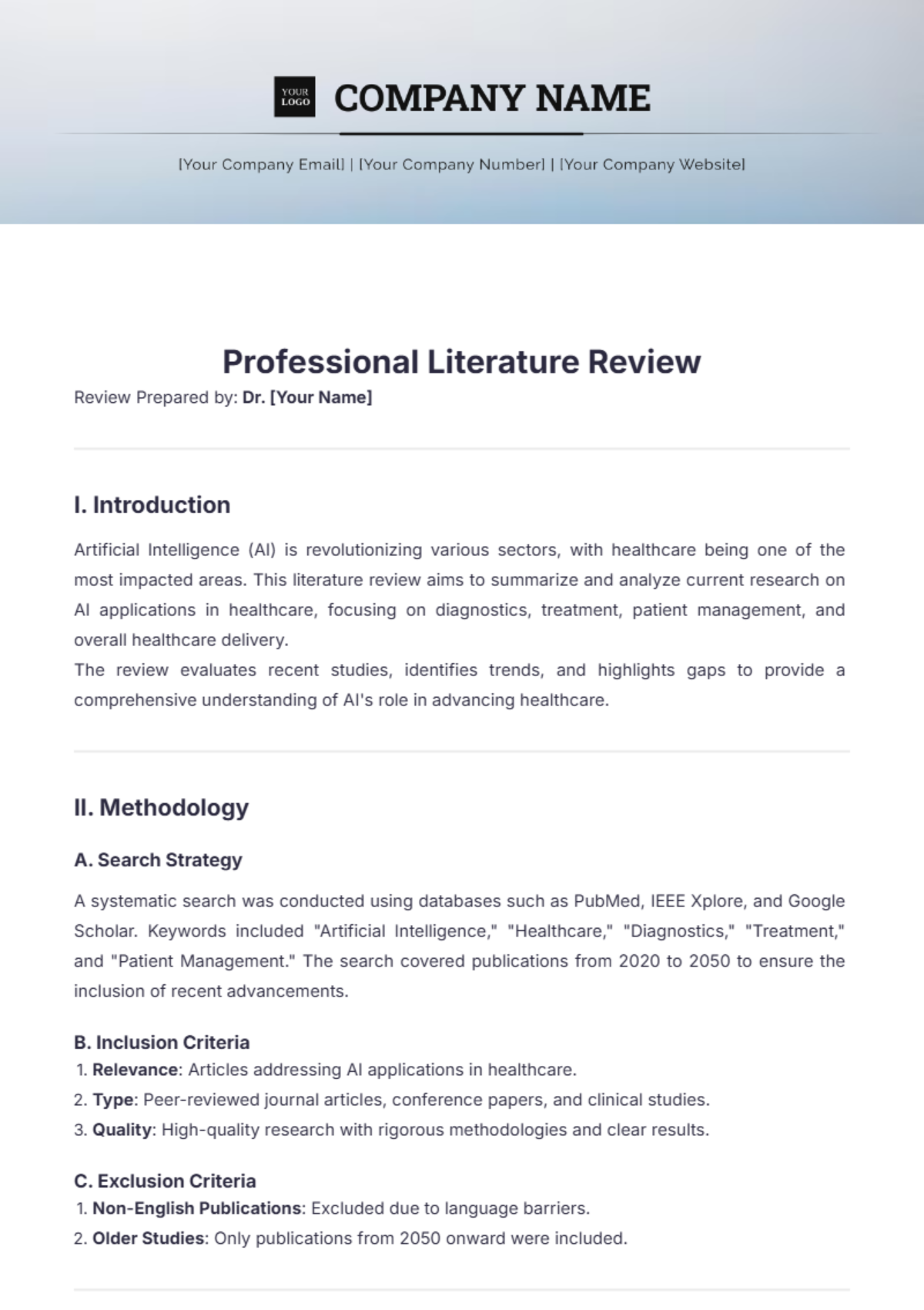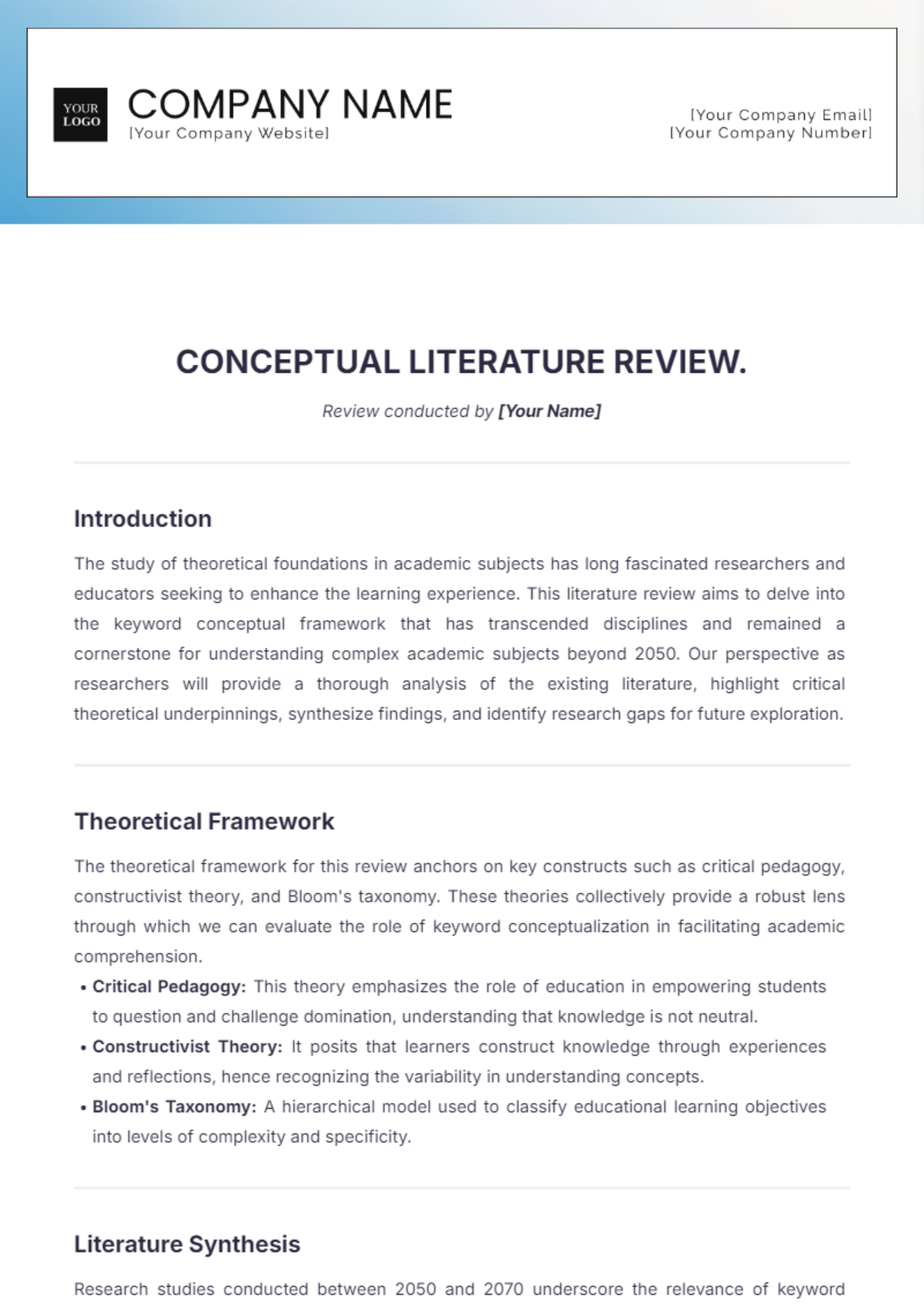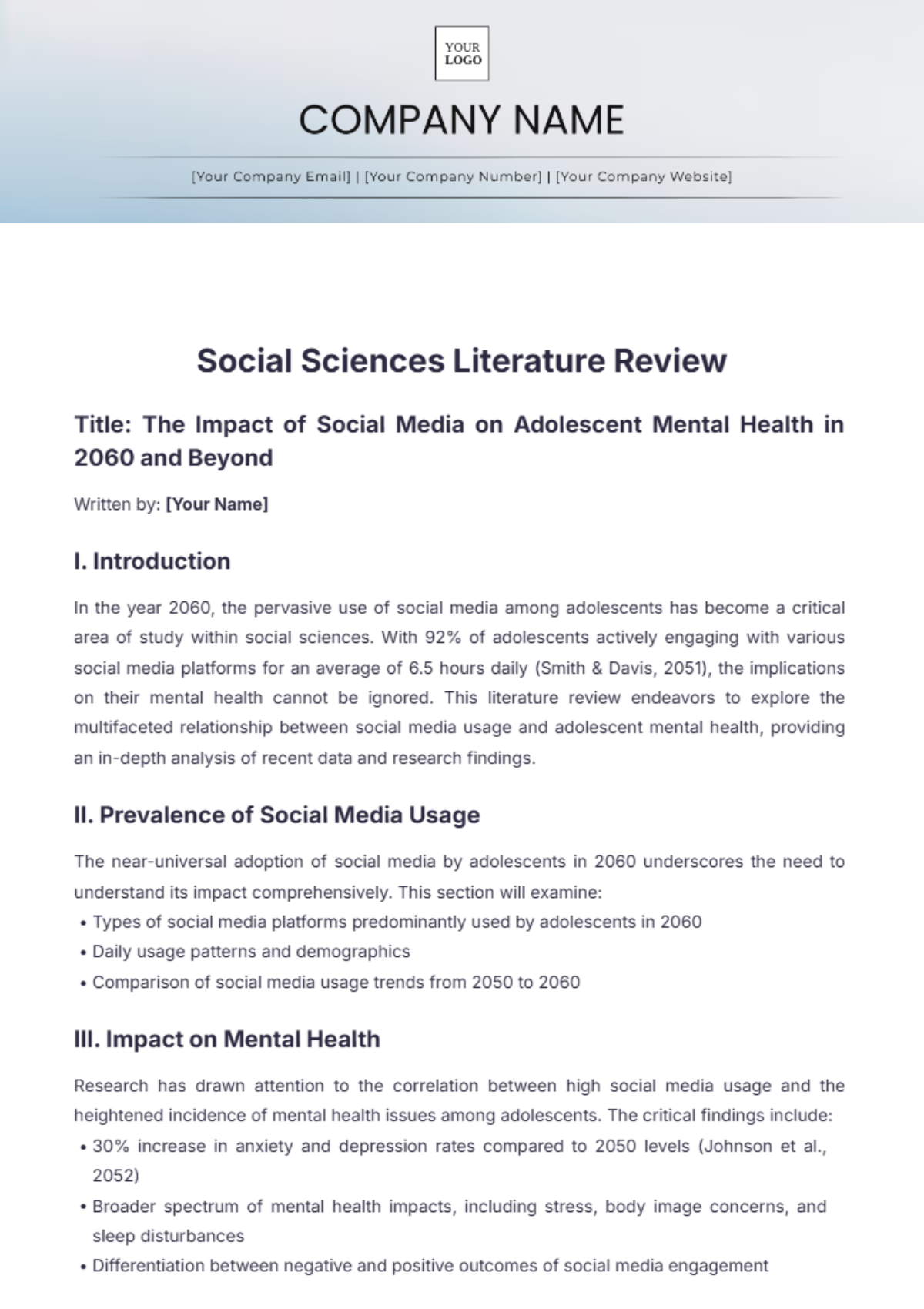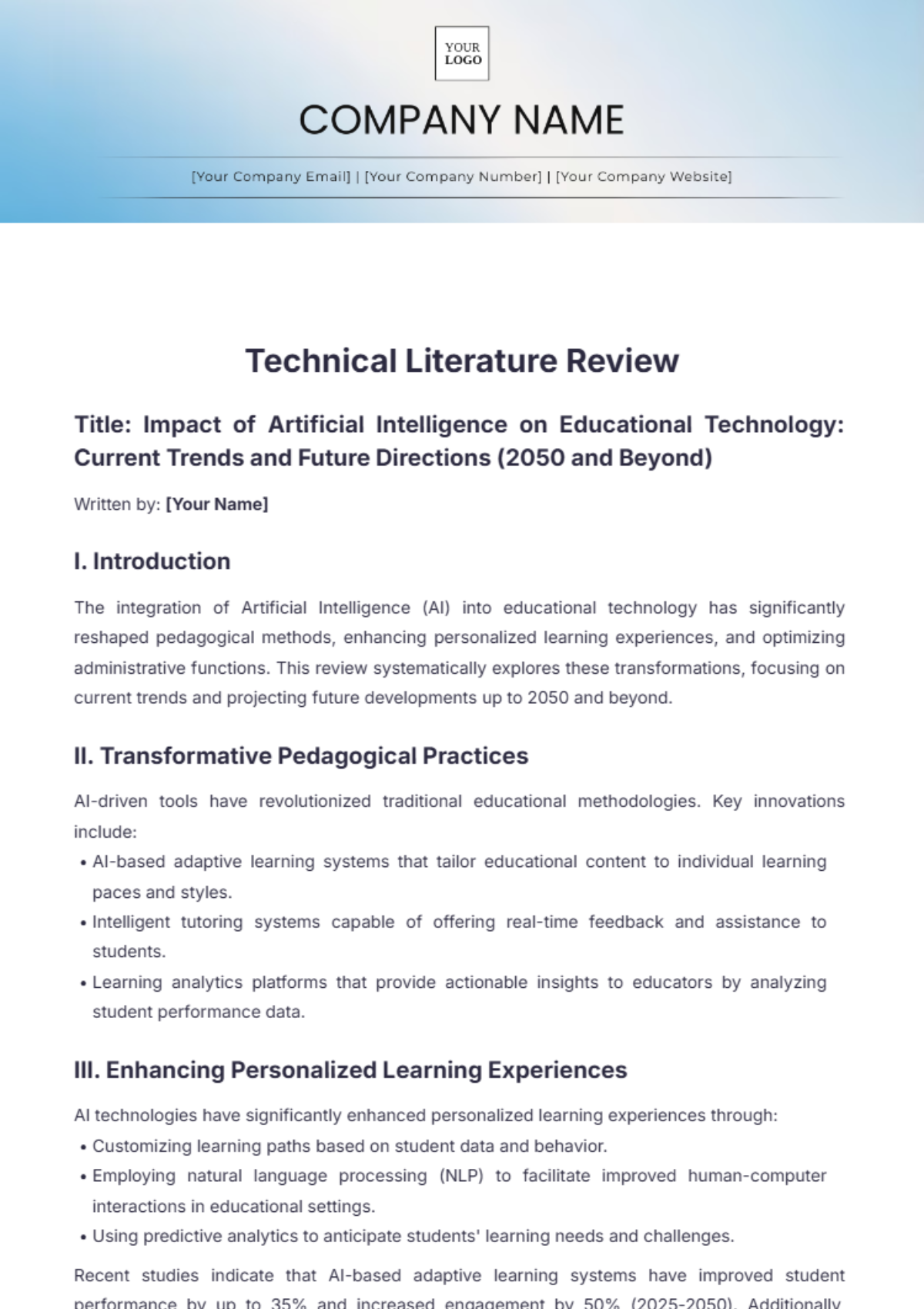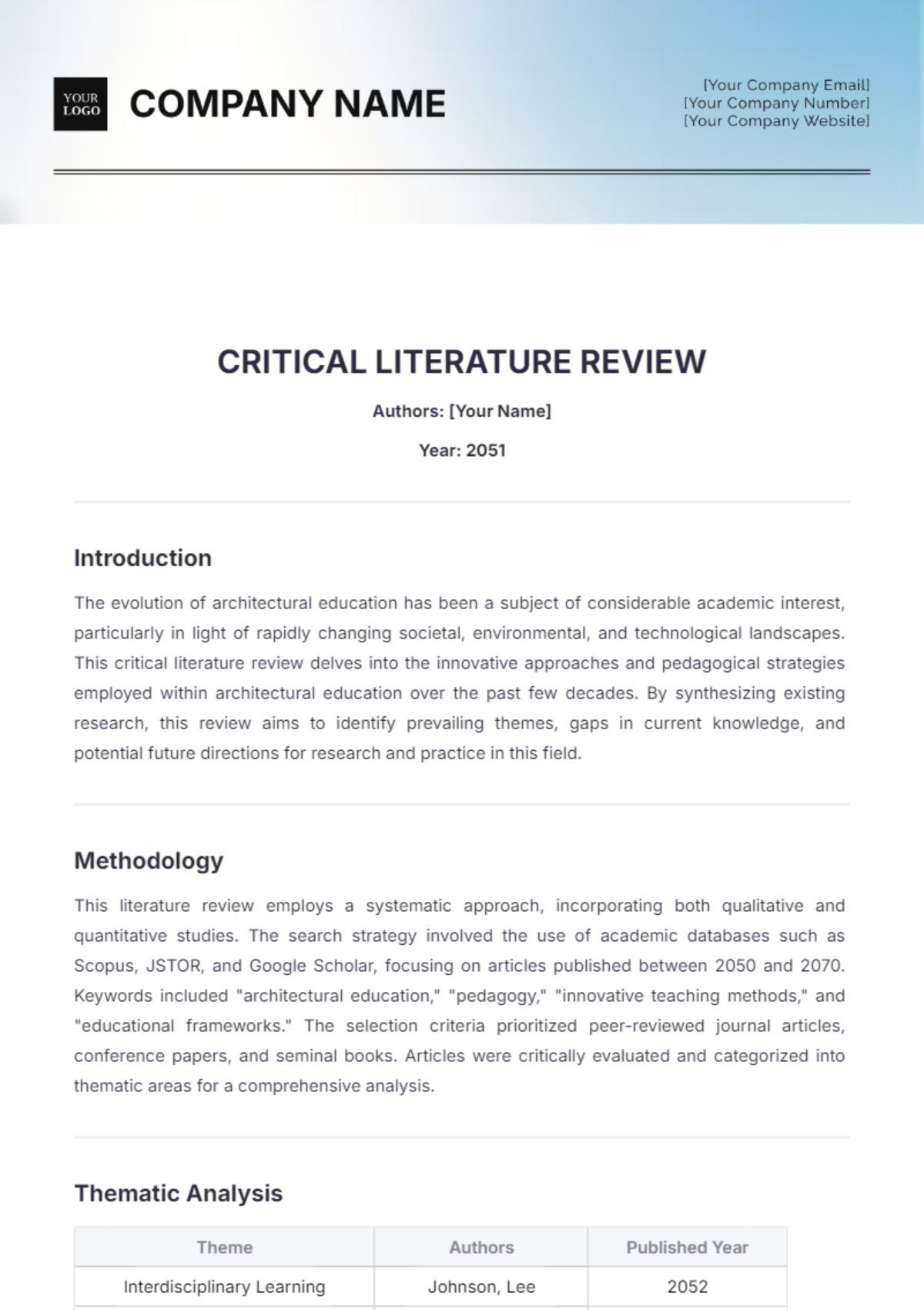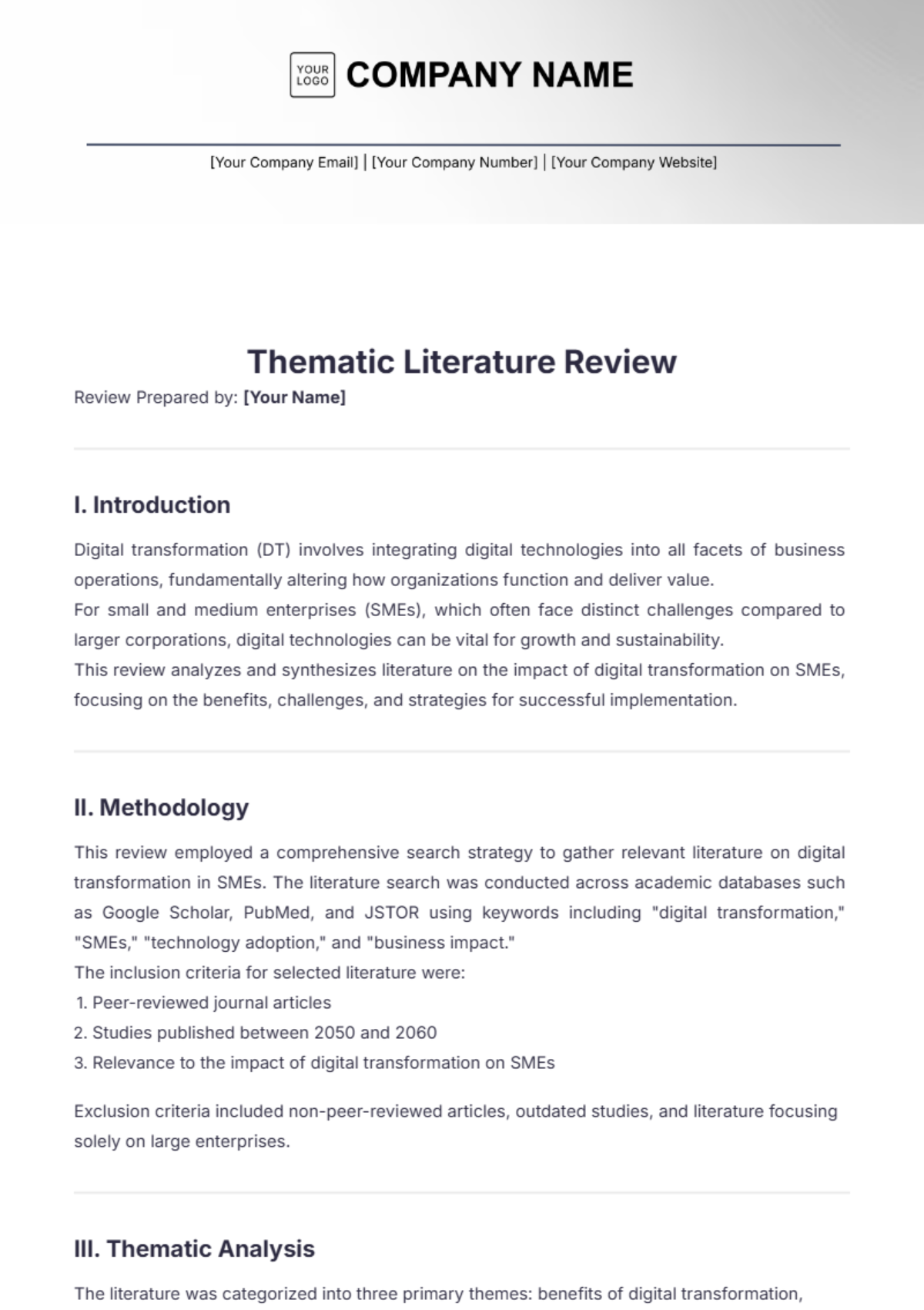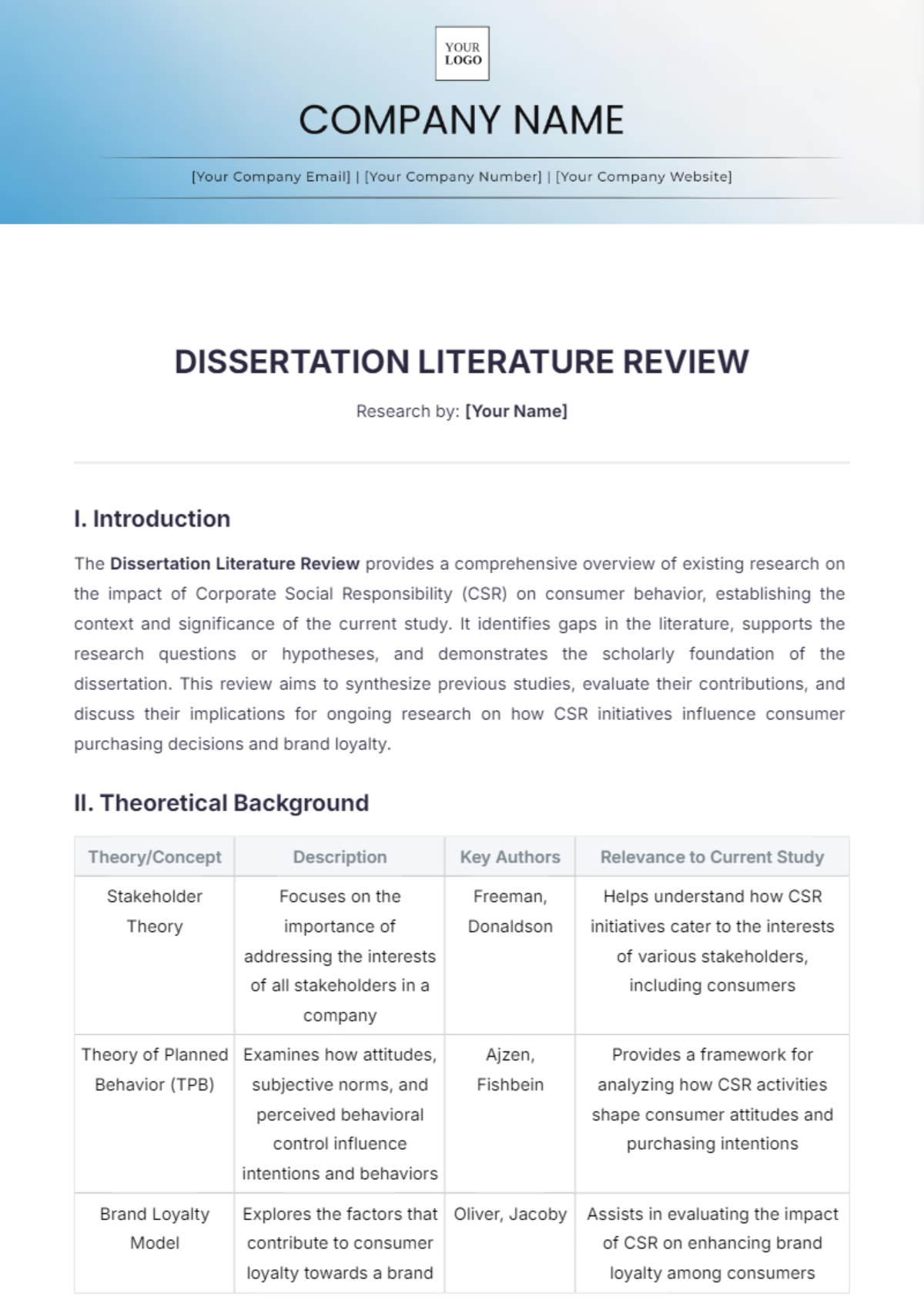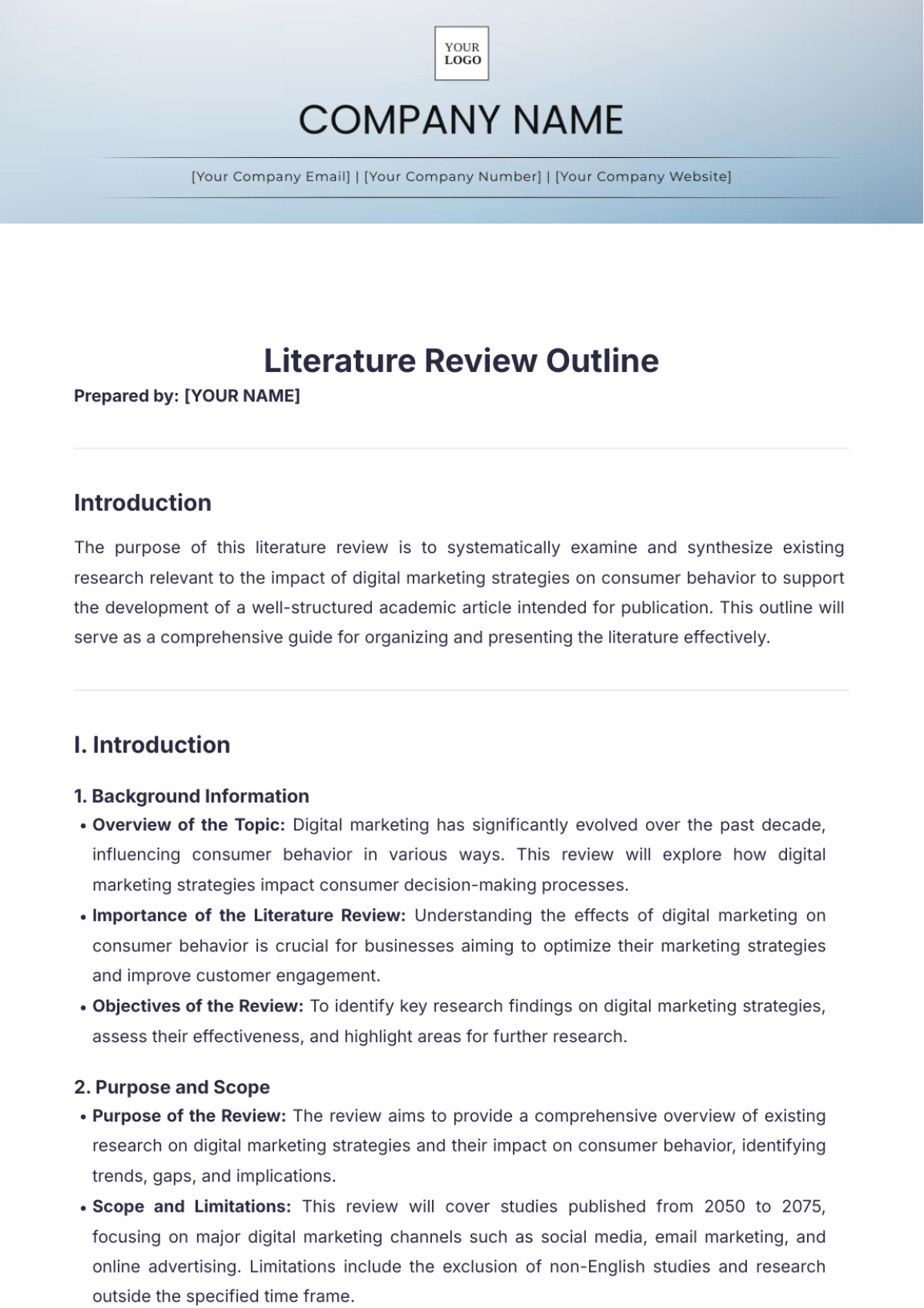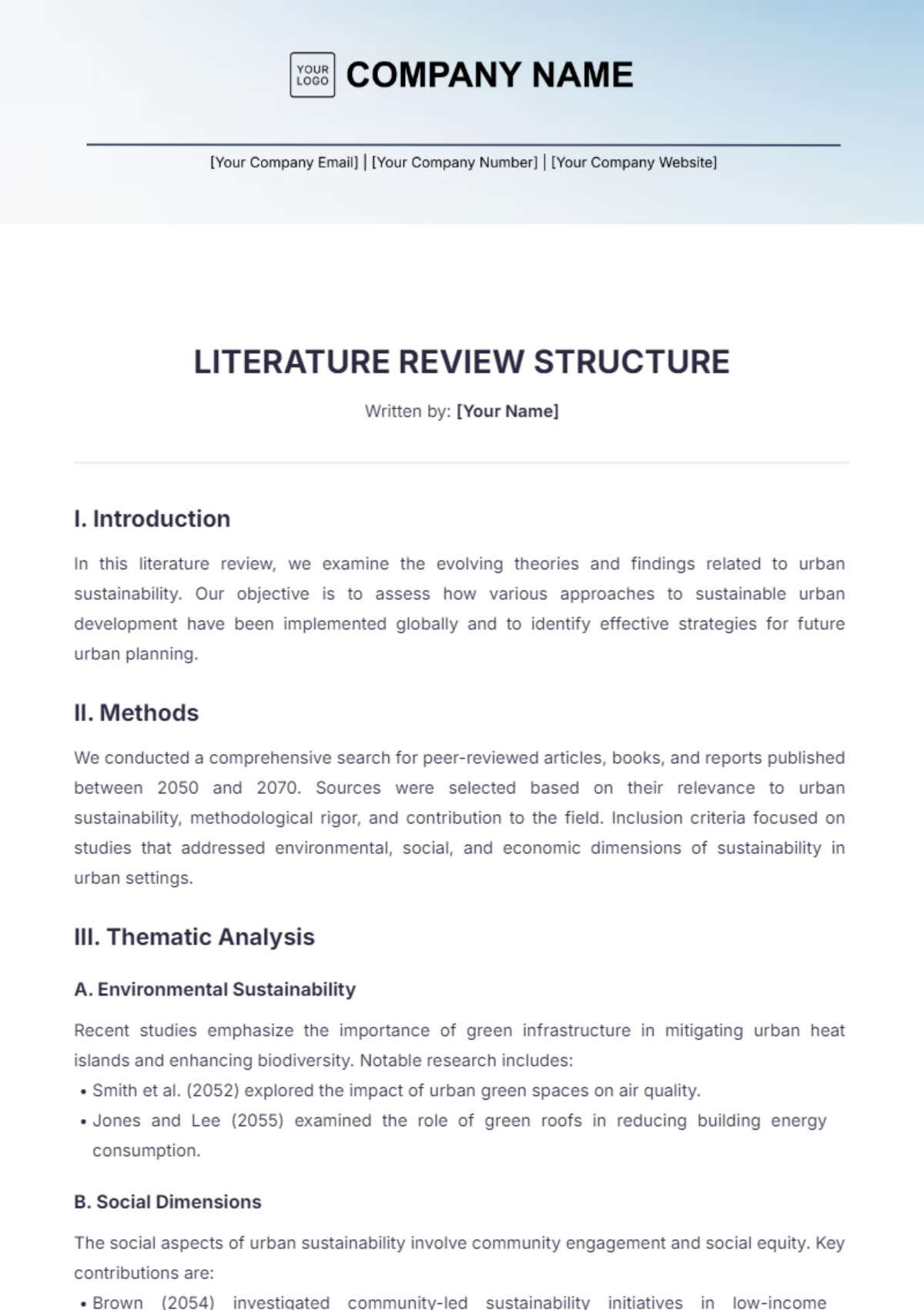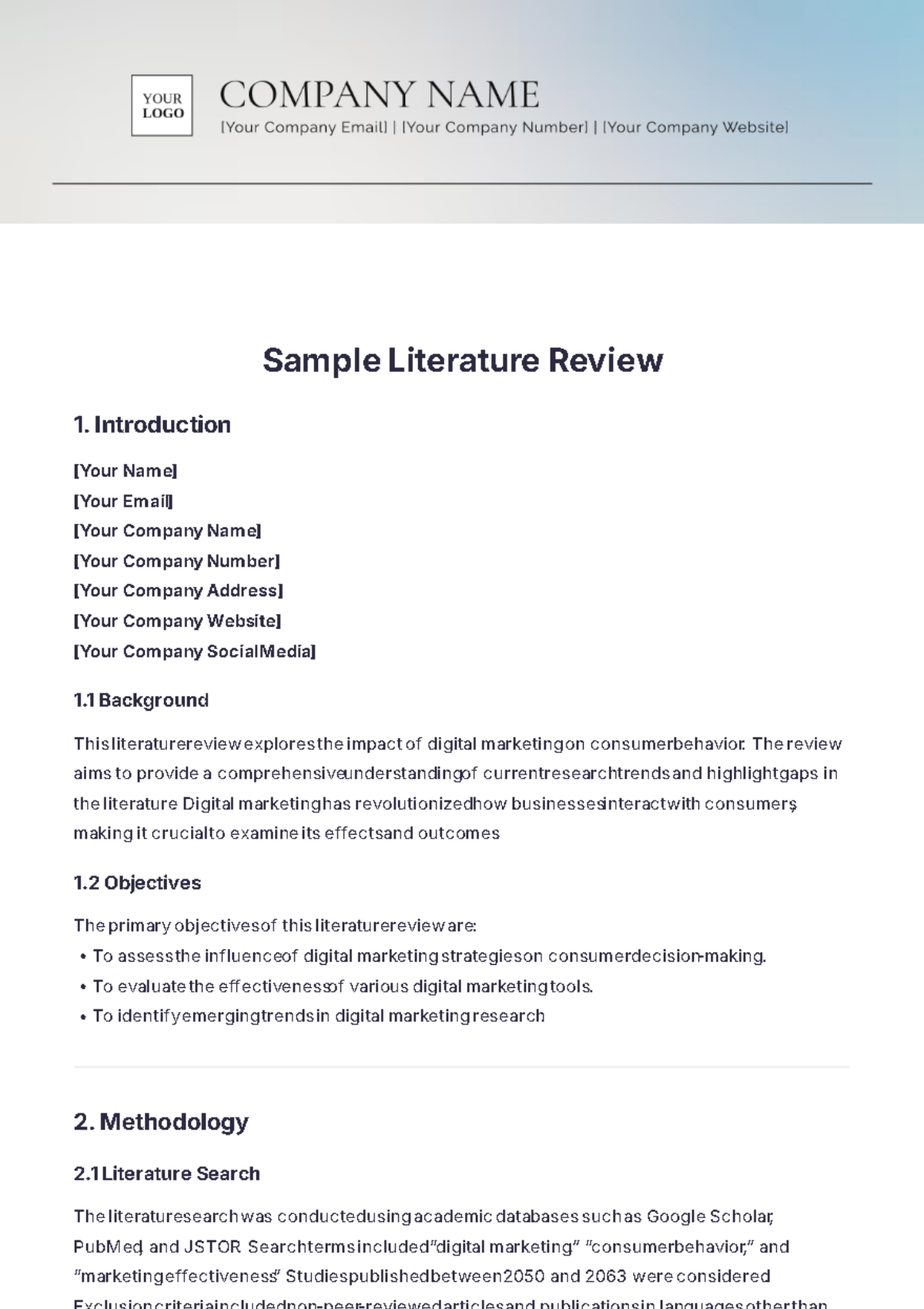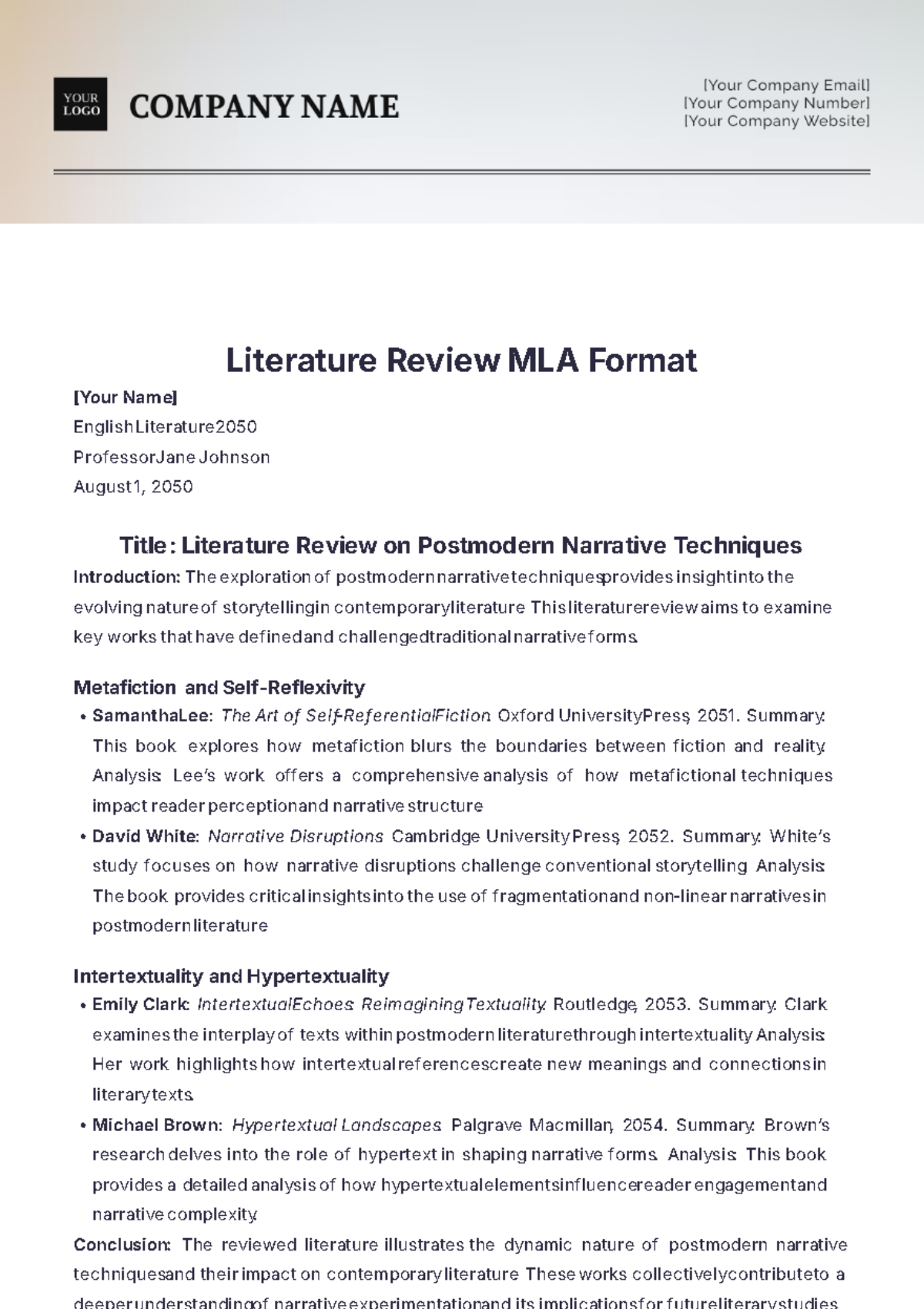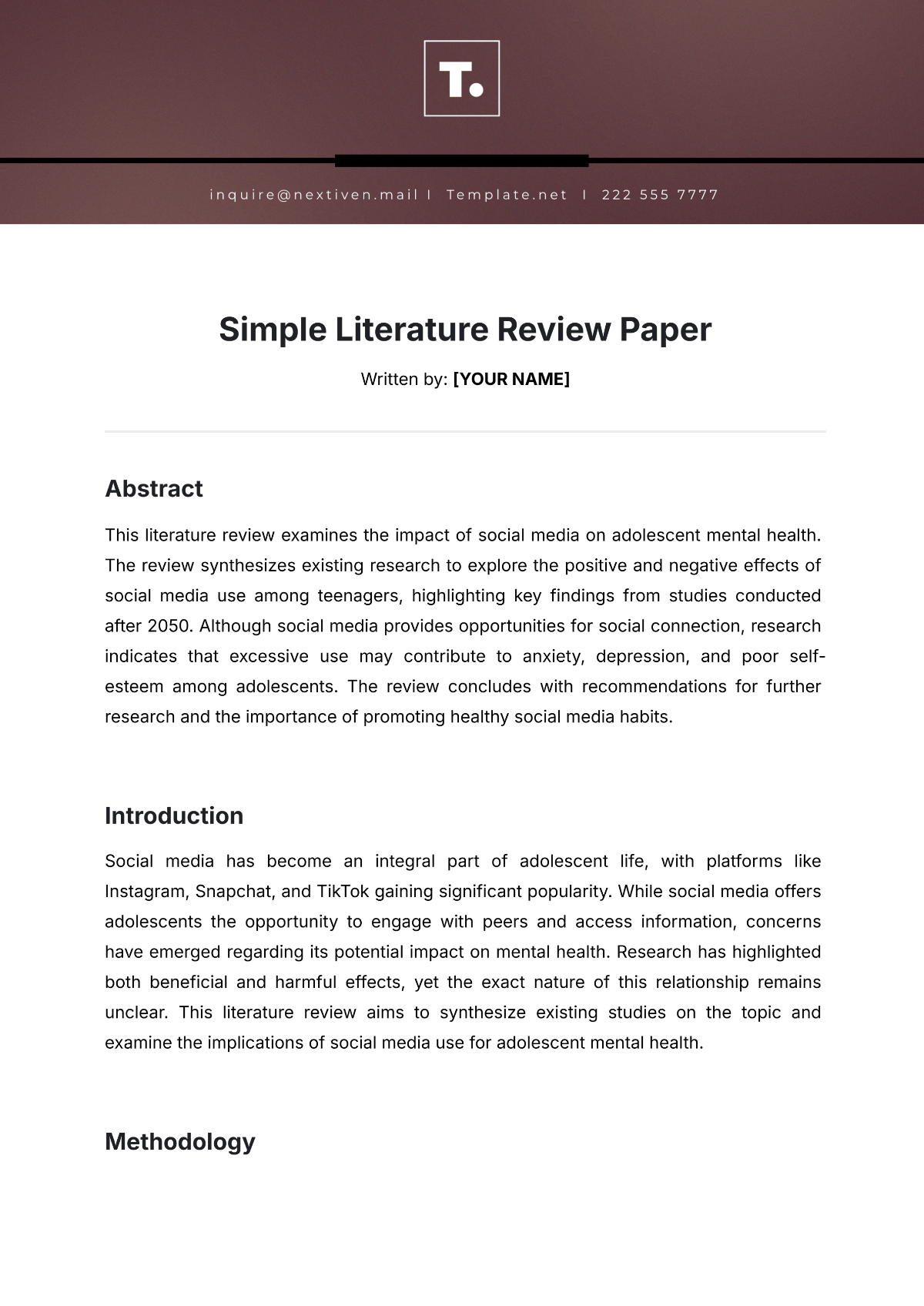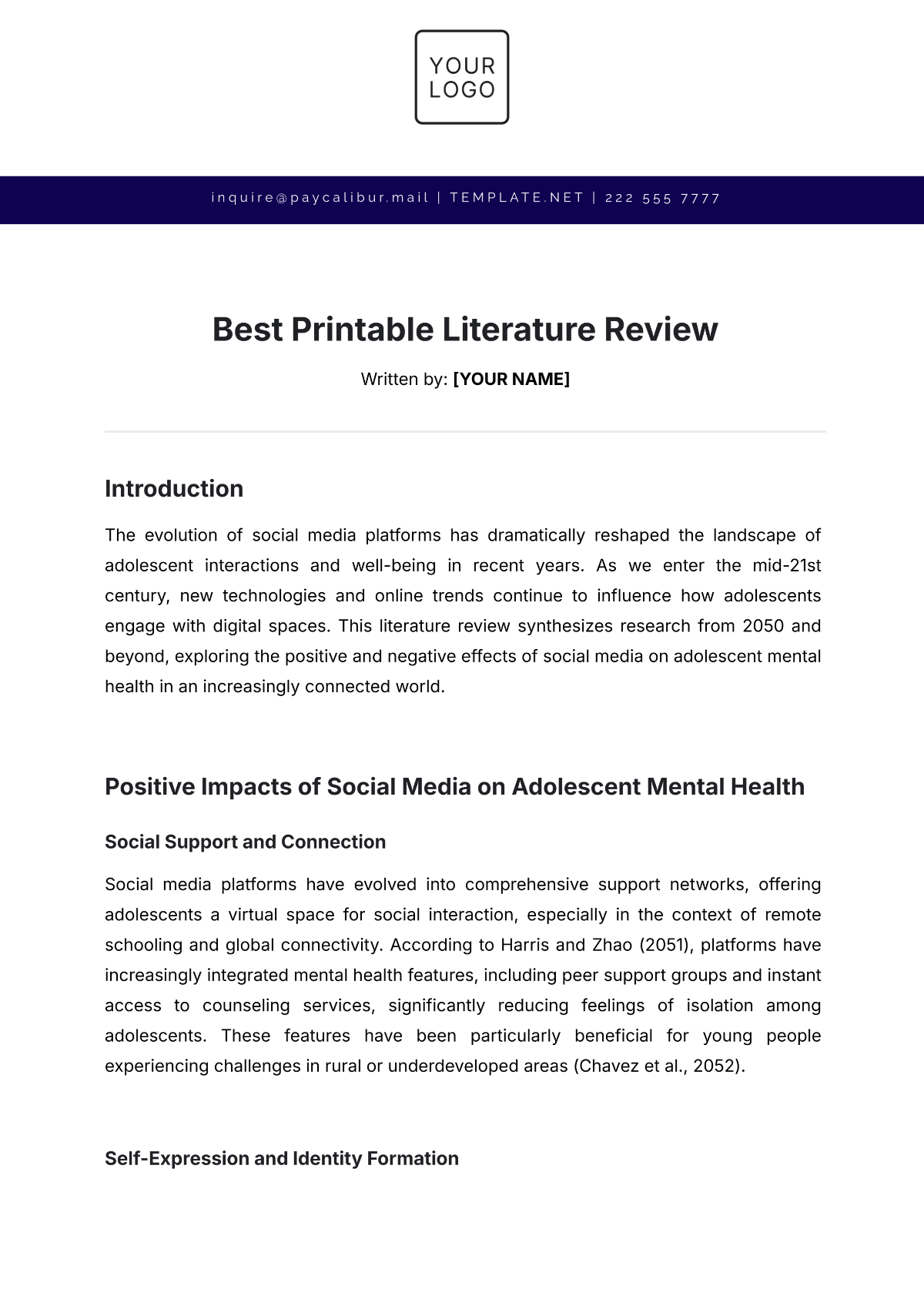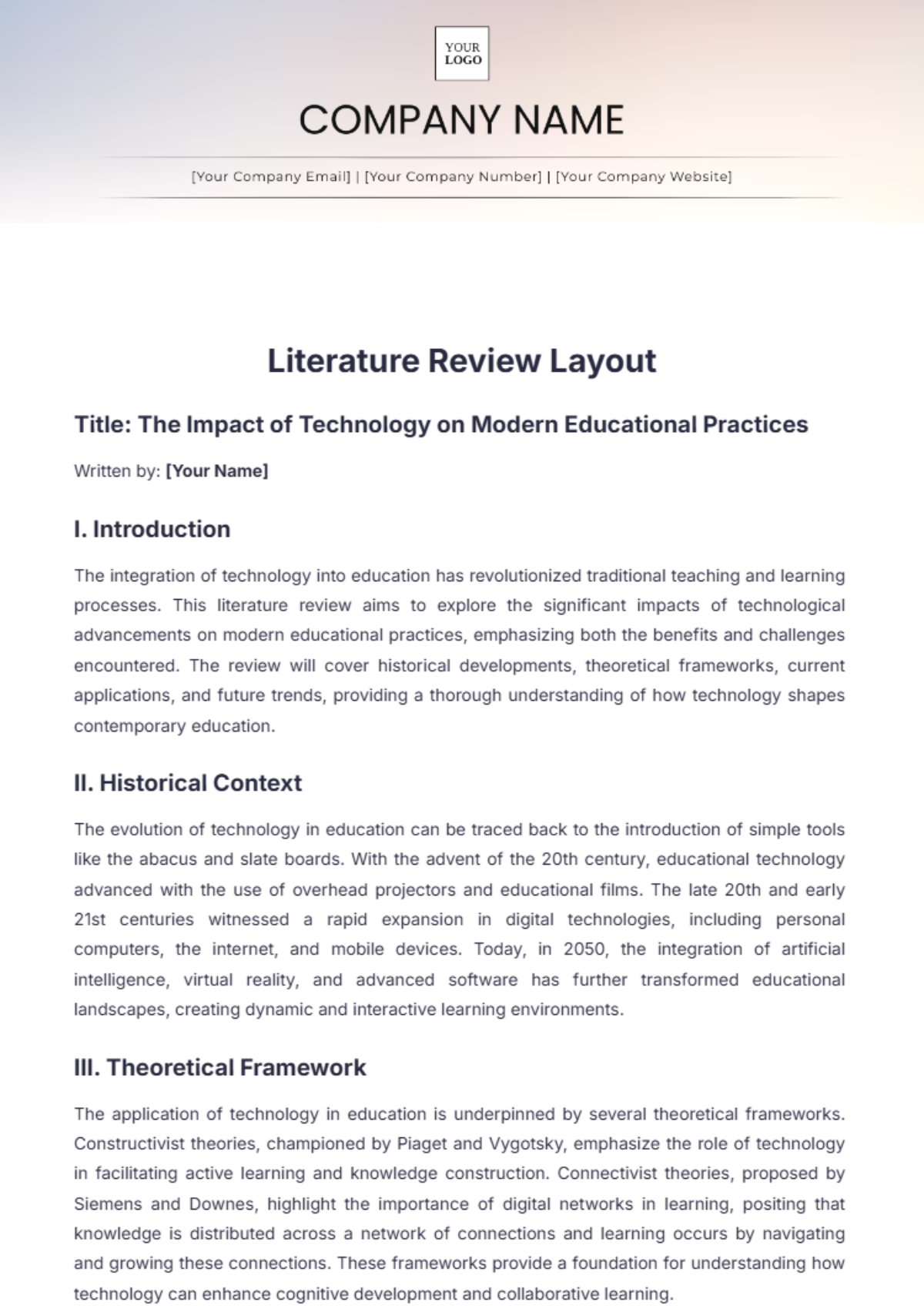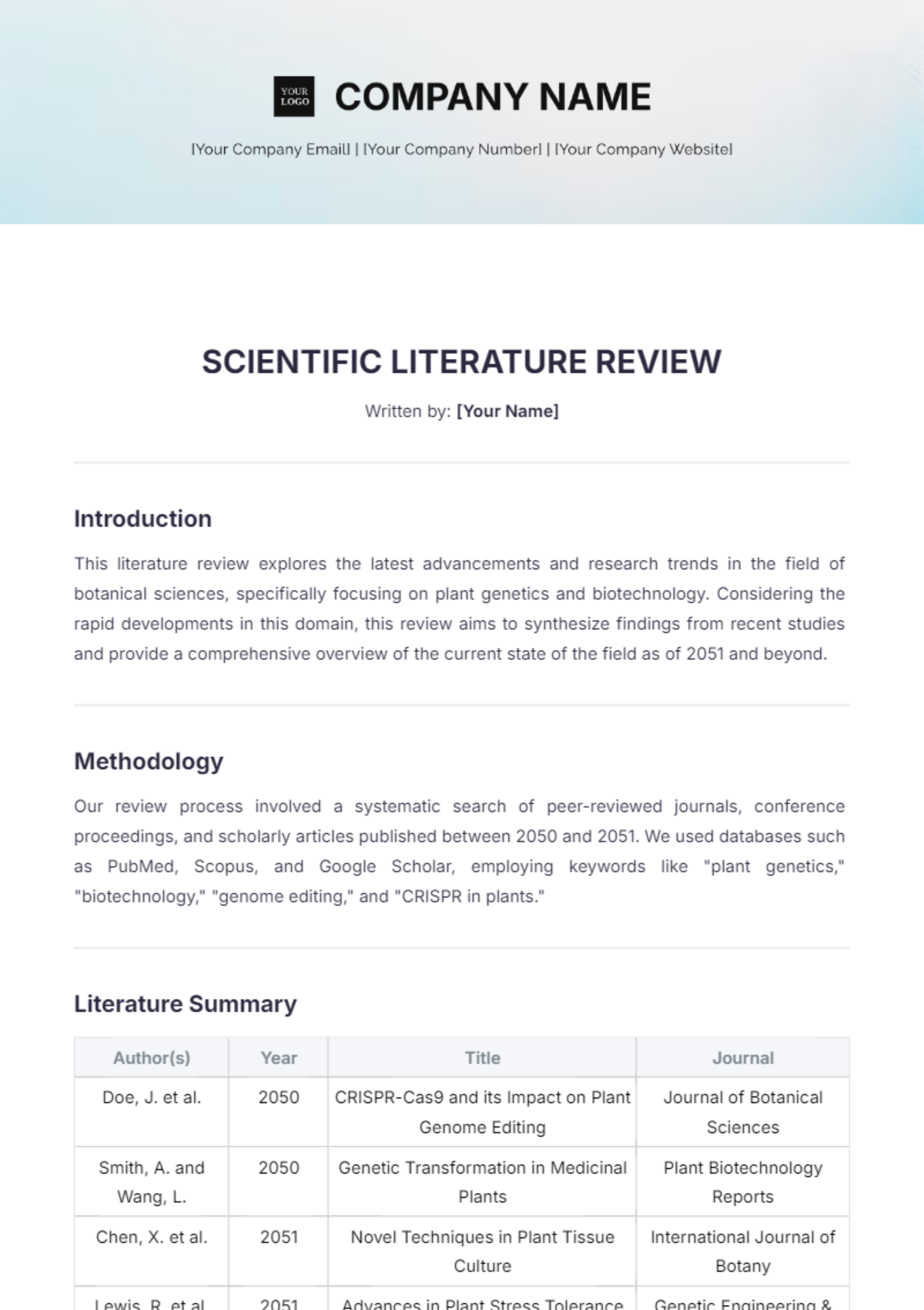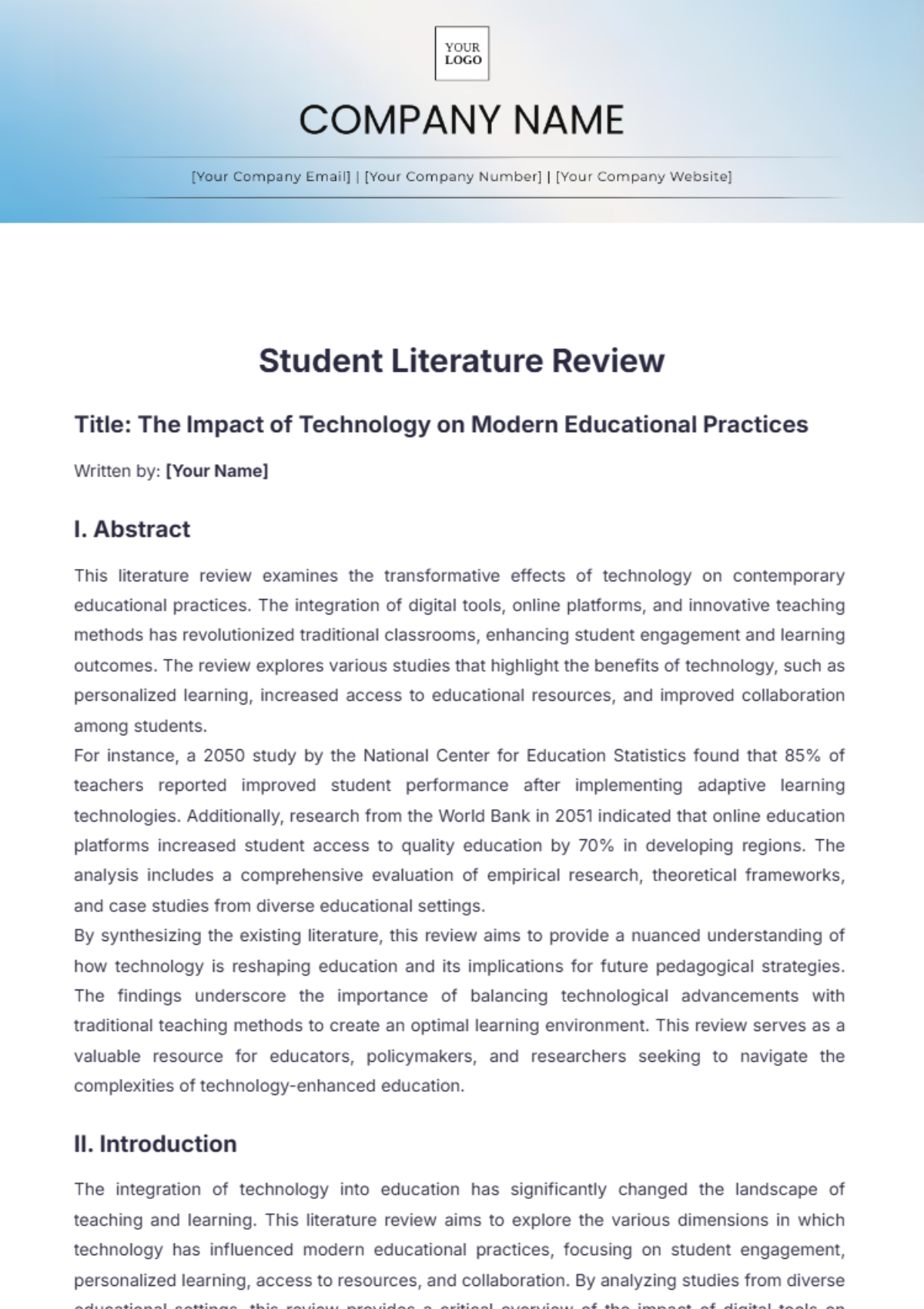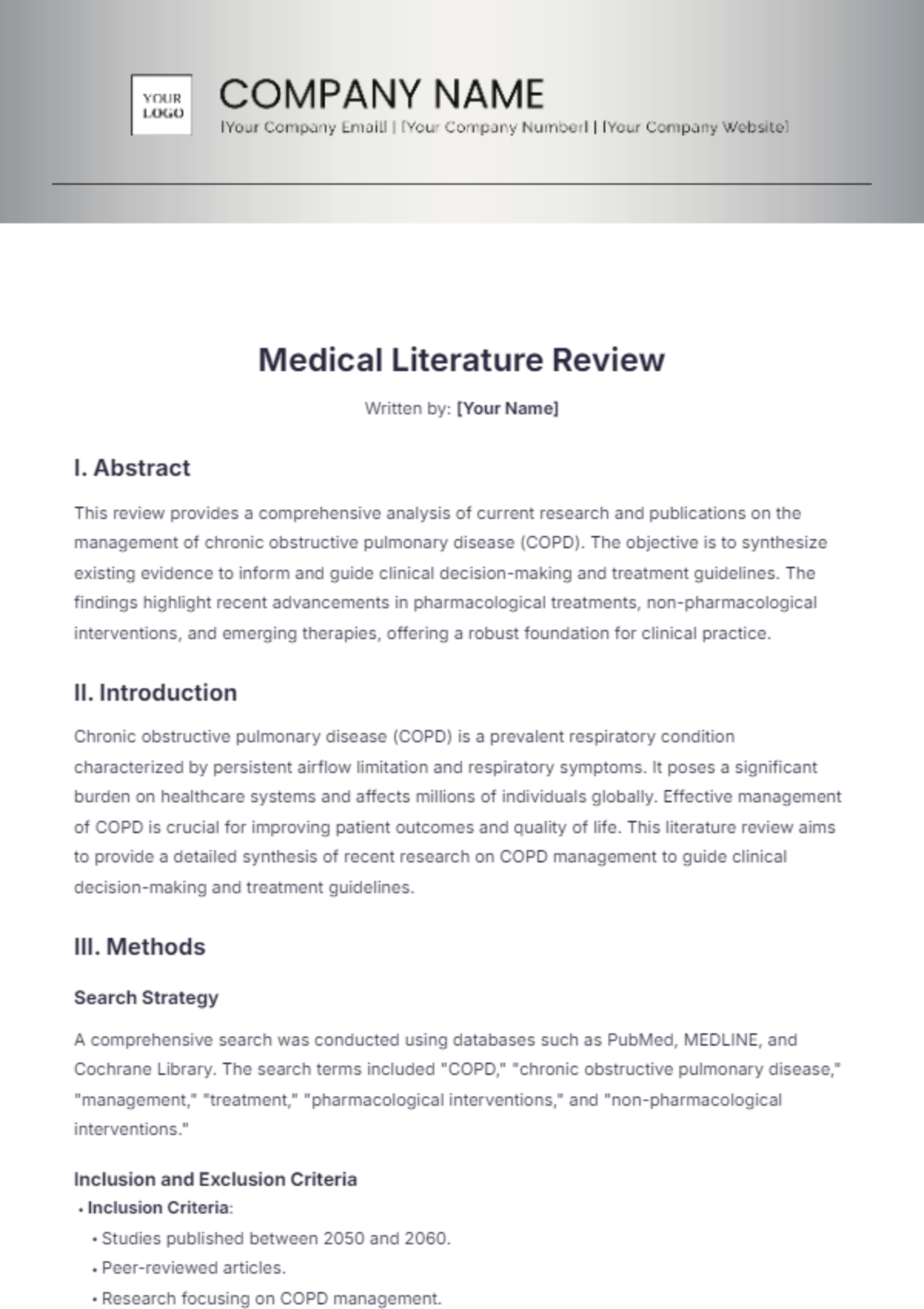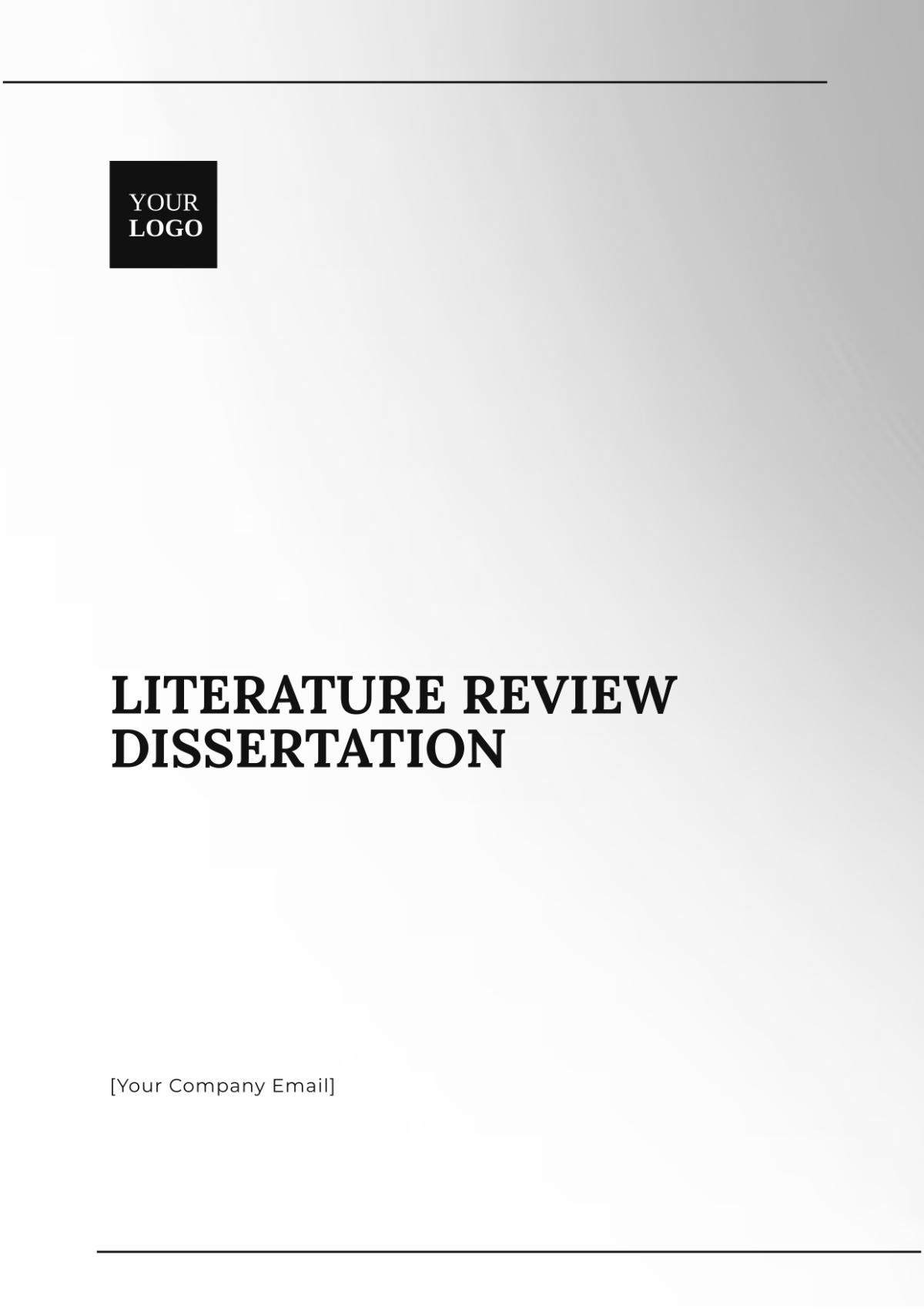Literature Review Writing Guide
1. Introduction
Purpose: The purpose of a literature review is to survey and summarize existing research related to a particular topic or research question.
Scope: Define the scope of your review. Specify the key topics, periods, geographical areas, or types of studies you’ll focus on.
Objectives: State what you aim to achieve through the review (e.g., identifying research gaps, providing a theoretical framework, offering new insights).
2. Search and Selection of Sources
Identifying Sources:
Use academic databases like Google Scholar, PubMed, JSTOR, or library catalogs to find relevant studies.
Include books, journal articles, theses, conference papers, and reports.
Inclusion Criteria:
Focus on peer-reviewed articles, primary research, and credible publications.
Specify the timeframe, geographic location, or subject areas.
Exclusion Criteria:
Exclude studies with insufficient data, outdated research, or those not directly related to your research question.
3. Organizing the Literature
Thematic Approach: Organize studies around common themes or concepts. Group articles that focus on similar issues or methodologies.
Example: Divide your literature review into themes such as “Methodologies in X,” “Key Theories in Y,” and “Recent Trends in Z.”
Chronological Approach: Alternatively, you could organize the literature in chronological order to show the development of the topic over time.
Methodological Approach: If focusing on methodologies, classify studies by research methods (qualitative, quantitative, mixed methods).
4. Analyzing and Synthesizing the Literature
Summary: Briefly summarize the key findings, theories, and concepts from the literature.
Critical Evaluation:
Evaluate the strengths and weaknesses of the studies, methods, or conclusions.
Identify contradictions or inconsistencies in the findings.
Discuss limitations or biases in the research.
Synthesis: Integrate findings from various studies to identify trends, patterns, or areas where research is lacking. This section should be more than just a summary—aim for a synthesis that presents a clear understanding of the field.
5. Identifying Gaps in the Literature
Highlight areas where research is lacking or underdeveloped.
Point out contradictions or unresolved questions.
Suggest possible avenues for future research based on the gaps identified.
6. Theoretical Framework
Key Theories and Models: Introduce and discuss the major theories and models that have shaped the field.
Relevance to Your Study: Discuss how these theories relate to your research question and their application in future studies.
7. Conclusion
Summary of Findings: Recap the major insights gathered from the literature, highlighting trends, agreements, and disagreements.
Research Contributions: Conclude by discussing how the reviewed literature has contributed to the field and how your study will contribute further.
Implications for Future Research: Offer suggestions on how future studies could address the gaps and questions raised in your review.
8. References
Include all references used in your literature review in the appropriate citation style (APA, MLA, Chicago, etc.).

